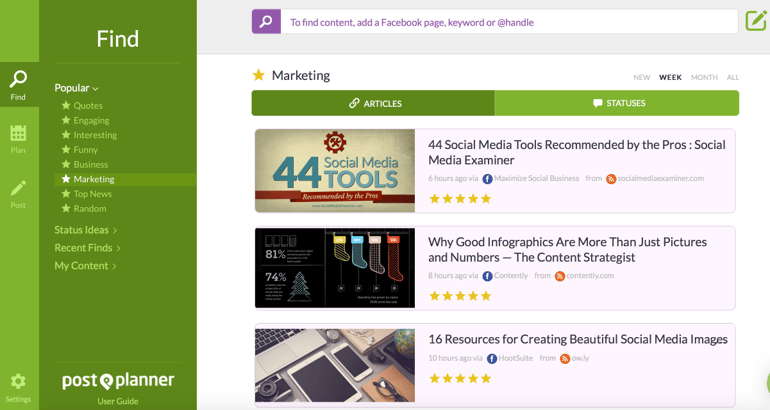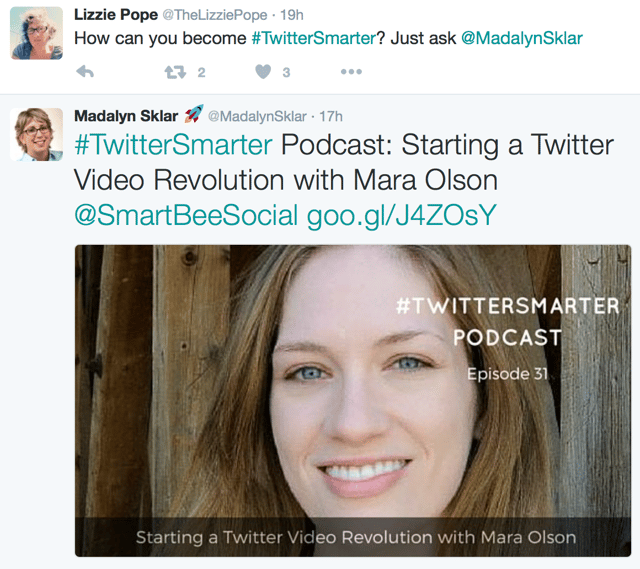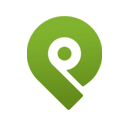
 140 characters to show who you are.
140 characters to show who you are.
140 characters - to express your message.
A small avatar - as a representation of who’s behind it all...
...Short and to the point - that’s what you get with Twitter.
Well, Tolstoy, probably wouldn’t like that fact, but I do. Twitter really makes you think about every word and detail in order to make it count.
That’s a lot of pressure, especially if you’re trying to build a personal brand.
You really have to think hard to make sure that it’s a perfect representation of who you are and what your brand is all about.
As former Twitter CEO, Dick Costolo, explained, branding on Twitter is just like a movie trailer. It shows “just enough of the story that you sense the whole and want more."
But that's not always easy to do.
The trick is to make your branding capture the very essense of your personal brand, and that's what this post is all about.
I'm going to share some actionable ways for you to build a personal brand on Twitter and keeping it consistent with your brand image.
How to Build Your Personal Brand On Twitter
How to Build Your Personal Brand On Twitter http://bit.ly/2eRBH3D (by @svitlanalat on @PostPlanner) Click to TweetBefore we get to the "how," let's dive into the "why."
Your personal brand is the way your customer perceives you.
It goes much deeper than just a logo or brand color. It involves everything you do: the way you write, the way you interact with your followers, and the customer experience you create.
If your personal brand is consistent and on-point, it will create a positive user experience and get you the attention you want.
After all, a distinctive brand is key to getting recognized and building a loyal following.
People are always ready to pay more for a brand, especially one they recognize and have positive associations with.
So, how do you master Twitter brand building?
Here are a few tips that can make a huge difference:
1. Polish Your Profile
This might seem like an obvious one, but there are still lots of brands who rush through this, without taking the time to make their profiles perfect.
Missing an opportunity to make a great first impression - never a good idea.
Of course, I'm mostly talking about your bio, your profile pic and cover photo. These are your calling cards and a representation of who you are...
...They need to be 100% consistent with your brand. End of story.
Bio
Think about what makes you - you. You only have 140 characters to catch the very essence of your brand and pitch it to millions of people.
Your bio is only 140 characters but it makes a big difference. It's one of the main things people look at to decide whether or not to follow you.
So, pay attention to every word you say as well as to how you say it. Make your brand voice and tone loud and clear. Explain who you are and what you do, but don't sound like a robot doing it.
Just take a look at Gary Vaynerchuk's bio. It shows all of his professional accomplishments and activities, while at the same time giving an inside look at his personal side.

Remember, your brand voice needs to be audible even in those 140 characters.
Focus on voice but don't forget to show your qualifications and provide the necassary links.
Many users don't realize this but your Twitter bio is just like any other page: it can rank on Google and get you more leads.
Your rank is determined by your Page Authority, specifically the number of followers you have and the incoming links within your bio.
In fact, according to Stone Temple, 26% of the bios with an inbound link from sites other than Twitter got indexed, and that's almost 4 times the overall average rate of indexation.
Take advantage of this opportunity - link to your site, blog, or company.
Profile Image
Since you're building a personal brand, you'll most likely want to stick with a headshot.
But, please, make it a high quality one, and don't forget to use the optimal dimensions. Twitter recomends using a profile image that is 400x400 pixels in size.
Also remember that no matter whether your profile image is a professional business photo, an appealing selfie, or a funny shot of you, it must be consistent with your brand.
Think about how you want to be perceived, and remember that your profile image and twitter handle are the only things some people will ever see while scrolling through their newsfeed.
You have to make them stop long enough to check out your account in detail.
Cover Photo
This is definitely a huge opportunity and the biggest piece of real estate you'll get on Twitter. Take the time to create a custom-designed image.
If you're no photoshop guru and don't have your own personal designer - no worries. There are lots of great tools that can help you create a professional looking cover photo. Here are a few I like the best:
Create a cover photo that gives a closer look at what you do, promotes your upcoming event or simply is a visual representation of your business. Whatever direction you decide to go, make sure that your brand style is still evident.
Yes, I'm talking about visual branding. You need to have a brand color, font, and style that people will automatically associate with you.
Take a peek at Peg Fitzpatrick's cover photo. She knows how to use Twitter to build her personal brand.
Her header shows a photo of her presenting at a conference, which builds her social credibility...
...At the same time, it's hard to miss her distinctive brand color, font, and logo.

Just like with the profile image, make sure to pay attention to the dimensions.
Twitter recommends using a cover photo that's 1500px in width X 500px in height, and there are many templates online, that can help you size your image correctly.
Optimizing your cover photo and profile image will make sure your profile looks good on both mobile and desktop, so don't forget to do it.
2. Develop Your Brand Voice
Building a brand goes much deeper than just creating visual recognition.
As a personal brand, it's crucial that you have a clearly defined brand voice that can be heard in every tweet and every piece of content you share.
Think about your own personality and the personality of your brand. Are you serious and professional? Are you laid-back and conversational?
Adjust your voice to coincide with the nature of your business and your audience. Think about the people you're trying to attract. Are they high-end entrepreneurs? Teenagers? Stay-at-home moms?
But remember that the most important thing is to be authentic. As cliche as it may sound, you need to be yourself.
If you're funny - be funny, if you're sarcastic - be sarcastic. There will always be people who'll love you for who you are.
The only way you can be consistent in what you say or do is if it's your own voice...
...And believe me, your audience will be able to tell whether you're authentic or not.
Just take a look at this tweet from Sue B. Zimmerman. Her voice and tone are very recognizeable as are her favorite emojjis.
It's amazing what a hashtag can do #Inbound16 is the one to follow!! 🐝I got added to Lita of list!! 🙌🏻 @HubSpot pic.twitter.com/1Fn97OTDSL
— ★TheInstagramExpert★ (@SueBZimmerman) November 7, 2016
Always make sure that the tweets you send out are consistent with your voice...
...Whether you're tweeting out content or engaging in conversation, your voice and message should all add up to a general image you want to convey.
3. Share Quality Content
Sharing quality content is crucial...
...But, once again, consistency is key.
A consistant brand puts their audience at ease. They know what to expect every time they click on a link you share.
If you are constantly sharing value-packed content relevant to your audience and your niche, you'll position yourself as an industry leader...
...And become your audience's go-to-source for that specific type of valuable content.
But it's got to be content your users will WANT to engage with.
The key to understanding what content that is, is knowing your audience. They're your audience and no one should know them better than you. So, put some time in and do the research.
Here are a few tips that will help you gain the right insight:
Do some a/b testing
Tweet out different types of content to see which one resonates with your audience the most. Test out one variable at a time. Your goal is to find the best combination of factors that encourages your audience to engage.
Test to see how your followers respond to different topics, different sources, different types of content, etc.
Keep an Eye on Your Twitter Analytics
There's a lot of information that can be found inside Twitter analytics. You can track:
- Tweet impressions
- Top Tweet & Top Media Tweet
- Number of Tweets linking to you
- Audience interests
- Demographics
- And many more stats that might provide valuable insight
See who your audience is and what they like. Watch for content that gets the most shares, likes, and subscribers. that will help you understand what content to focus your efforts on.
Monitor Mentions
Monitor your mentions and listen in on what your audience is saying about you and your content.
What are they resharing? Are they giving you any feedback? What comments are they tweeting out alongside yoru content?
Your audience is speaking to you through words and actions. You just have to listen.
There are many tools and tactics that can help you learn more about your audience and what content resonates with them. Once you know what content that is, you simply need to share more of it!
Mari Smith is always a great source of relevant social media news and content. She does a fantastic job sharing her own content and that from other reputable sources. To show that she's actually reading what she's sharing she always adds a little note from herself.

We live in a hectic time and none of us have the hours to read all the content shared on Twitter.
Just imagine. You see two tweets. One is from a brand that's always sharing high-value articles. the other - from a company that's retweeting everything in sight. Which do you click on?
It's a no brainer. In fact, there are lots of users who will even retweet the content shared by their favorite brands without even opening it. Why?
They know what to expect.
Here at Post Planner, we use our own app to find and share top quality content.
In fact the app does most of the work for us. It pulls in content from our favorite sources and ranks it according to virality.
All we need to do is simply take a look at the ones that come up on top.

4. Brand Your Visuals
I hope that by now you know all about the immense power of visuals and visual marketing.
Good. Well, chances are that you're also creating some of your own visual content to share on Twitter.
If possible, always give preference to images that are consistent with your website and brand...
...After all, they're your best chance to promote your personal brand and get it recognized at a glance.
Make your images easily recognizable and memorable.
Find the style that matches your brand's look and feel. Test it to see how well it does. Once you find your perfect mix, duplicate it.
If you can hire a designer to create your styled images - fantastic. If not - not a problem. There are lots of great apps that let you create great branded visuals.
I personally, love Canva. It allows enough freedom to create anything I want, without the complexity of Photoshop.
One of the smartest things you can do is create a few branded templates. Them, simply drop in your text and you're done!
If that's too difficult, you can at least add your logo to all of your images and brand them as yours.
Just take a look at Rebekah Radice's branded images. Anybody who knows Rebekah will be able to recognize this image as hers in a heartbeat.
The distinctive orange color, the styling - it all screams "Rebekah!"
11 Facebook Principles That Will Improve Your Marketing - https://t.co/2Jd3jKJQGH pic.twitter.com/Jjo4Beq5ni
— Rebekah Radice (@RebekahRadice) November 7, 2016
5. Invest in Hashtag Marketing
It's no secret that hashtags one of the best ways to get your content in front of a bigger audience...
...But did you know that you can use hashtags to help build your personal brand?
Yes! In fact, branded hashtag marketing is more popular than ever.
Sure, you should tap into the power of trending hashtags, but you can also take a stab at your own.
Create your own custom hashtag to tell a story or build a conversation around a topic.
If you're running an event, such as a webinar or Twitter chat, you can create a hashtag and use it to promote the event and build a conversation around it.
That's what Madalyn Sklar did. She created the #TwitterSmarter hashtag and it slowly evolved into a successful Twitter Chat, Podcast, and even a course.

You can also create a hashtag to label and brand your content. We, for example, use the #PPTip hashtag to share valuable social media tips.
Anytime someone sees that hashtag, they know it's a handy tip from Post Planner.
Manage to create a hashtag with a conversation around it and you've guaranteed great exposure for your brand...
...But don't kid yourself thinking that you'll come up with a cool hashtag and it will spread like wildfire.
It won't.
You need to encourage conversation around the hashtag and get people to share a story around it.
So, let’s say you run a brand known as ABC and want to create a hashtag your clients can use to share their stories and opinion about your brand.
The hashtag you come up with is #ABCStory. If you simply add it on at the end of your other content, it will never go anywhere.
What you can do is add the hashtag to any of your own stories around the brand.
You can also use the branded hashtag, generically asking your followers to share their memorable #ABCStory.
Viola! You're now building a relationship with your followers, getting personal, as well as increasing your brand’s exposure.
Pretty nice, right?
Final Thoughts
A strong brand connects with its followers at an entirely new emotional level and creates lasting relationships.
You can tap into that immense power by building out your brand on Twitter.
But always remember that your brand represents you, your company, and your promise to your customer.
So, make sure it’s an accurate representation





ViewHide comments (3)